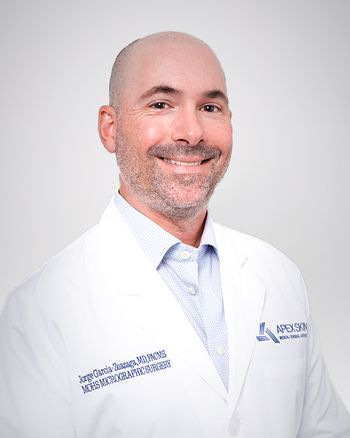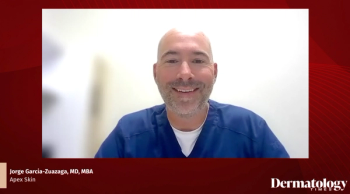
PA survey: Longer apprenticeships favored
A recent survey of physician assistants suggests these staff members must spend on average eight months in dermatology offices prior to seeing patients independently to feel comfortable in this role
Key Points
New York - A recent survey of physician assistants (PAs) suggests that lengthening their dermatology-related experience prior to allowing them to see patients independently could increase their comfort in treating patients with skin problems.
In 2006, a voluntary, anonymous survey was distributed to PAs attending an educational course. Of the 185 surveys returned, researchers found 178 of these responses evaluable.
"We have been studying the roles and profiles of nonphysician clinicians (NPCs), including PAs, for the past several years," says Alexa Boer Kimball, M.D., M.P.H., associate professor of dermatology at Harvard Medical School and AAD Workforce Task Force immediate past chairman.
To date, she says, "Most of the data we've gotten about PAs has come from either the Society of Dermatology Physician Assistants or from asking physicians about their PAs."
However, she says the study represents the first time PAs had been queried directly using some of the same measures that have been used in other studies.
The PA experience
"We found that the PAs reported essentially the same things the M.D.s did in terms of the types of patients they're seeing, distribution of these patients and supervision," she says.
"Productivity was the one area where things didn't jibe as well as we might have thought," she says, "but everything else was remarkably similar."
According to the survey, Dr. Kimball says, "Most PAs are spending most of their time doing medical dermatology, and a smaller proportion of their time in cosmetic dermatology and noncosmetic surgical dermatology."
More specifically, mean response for the amount of patient care time PAs spent in medical dermatology was 72 percent. The corresponding figures for cosmetic and noncosmetic surgical dermatology were 11 percent and 17 percent, respectively.
"The other most important finding is that the longer the PAs have been working in a practice before they see patients independently, the more comfortable they were with their skills," Dr. Kimball says.
In fact, she says length of association prior to independence was the most important predictor (p<0.05) of PA comfort in seeing patients autonomously.
In this regard, she says 75 percent of respondents reported feeling sufficiently comfortable with their prior training to see patients autonomously.
Those who felt comfortable had an average of 7.8 months' association with dermatology prior to seeing patients independently, while those who reported feeling uncomfortable had only 3.1 months of dermatology exposure.
The survey's relatively small sample size could create some bias in the above figures, Dr. Kimball says.
However, "What the survey said to us was that on average, people who felt most comfortable with their training had almost eight months of training, whereas around three months or less might not be adequate," she says.
This is especially true since 88 percent of respondents had no formal dermatology PA training before being hired by dermatologists. The average length of training with the dermatologist before seeing patients independently was 6.6 months (range: one to 108 months), and nearly 90 percent of subjects saw both new and follow-up patients independently.
"We don't have good credentialing, testing or other ways of measuring dermatology PAs' level of knowledge and expertise," Dr. Kimball says.
"But from their own self-reference point," she says, "it seems as though these respondents, in general, thought they needed on average eight months' dermatology experience."
Conversely, Dr. Kimball says researchers didn't find respondents' comfort in seeing patients independently to be statistically associated with how long they had been a PA or the duration of PA certification programs.
Subjects who reported feeling comfortable seeing patients independently had a mean PA certification program duration of 78.4 months, versus 70.8 months for those who said they didn't feel comfortable.
In the productivity area, PAs reported seeing an average of 113 (range: 19 to 250) patients weekly. Seventy-five percent of respondents reported having indirect supervision - defined as physician supervision available on site - at work. Average respondent age was 36 years, with a range of 24 to 61 years.
"The mean age was relatively young compared to physicians' mean age," which is around 50, Dr. Kimball tells Dermatology Times.
Going forward, she says, "We're continuing to monitor the dermatology workforce very carefully."
Likewise, she says AAD continues to participate in ongoing discussions regarding appropriate training and credentialing for NPCs throughout medicine. Therefore, she says, "We will continue to see that evolve over time."
But for now, Dr. Kimball says that with one-third of physicians in other AAD surveys reporting that they use NPCs, "NPCs are here to stay."
Disclosure: Dr. Kimball reports no financial interest relevant to this article.
For more information:
Newsletter
Like what you’re reading? Subscribe to Dermatology Times for weekly updates on therapies, innovations, and real-world practice tips.

















